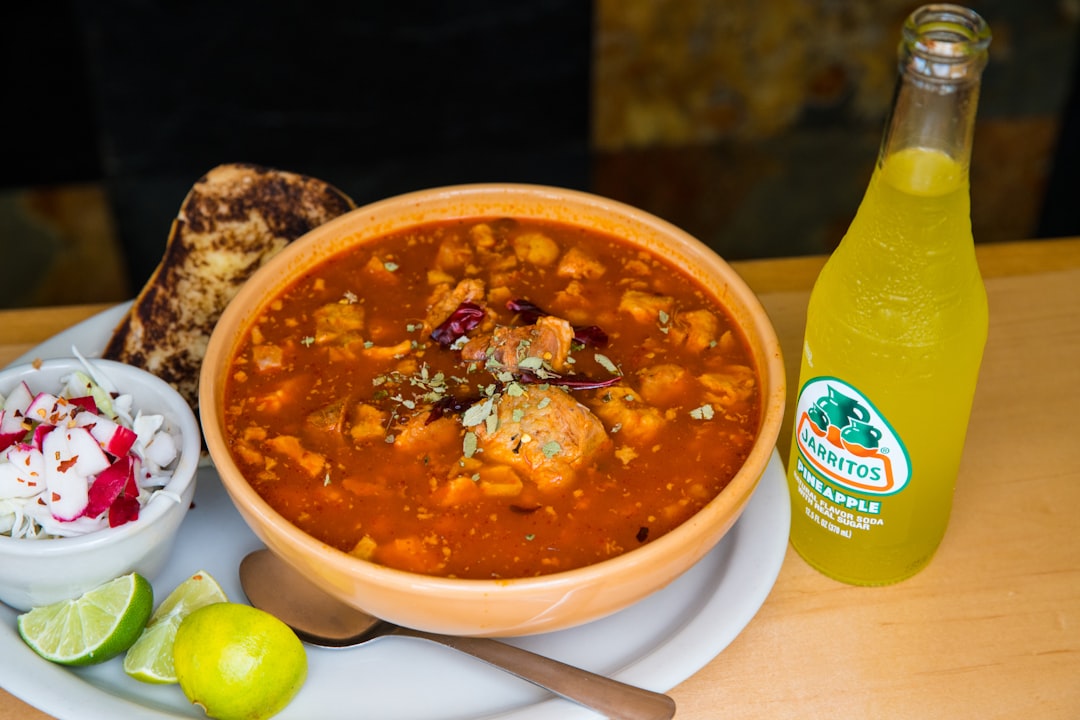Menudo
Menudo recipes
Amazing Menudo recipes sourced from the web.
The origin of Menudo
Menudo is a traditional Mexican stew dish with an exceedingly beguiling origin story. Much like its famed spices, which consist of robust flavors such as chili peppers and cumin, the recipe for Menudo is steeped in both history and culture.
The dish is believed to have originated with the Aztecs, who had an affinity for tripe – the cow's stomach lining used as the primary ingredient in Menudo. According to some accounts, during the agricultural period after the Spanish conquest of the region, the Aztec's tripe dish evolved into what is known today as Menudo.
Perhaps the most intriguing aspect of Menudo's evolution is the folklore surrounding its purported medicinal properties. It is said that Mexican soldiers returning from battle in the early 1800s would consume the concoction in large quantities to cure their wounds – thus earning the dish its initial rise to fame. While it may be difficult to prove the medicinal nature of Menudo, its reputation lives on in Mexico and throughout much of Latin America.
In addition to its purported healing powers, Menudo has remained a prominent feature of Mexican cuisine. This can be attributed to the fact that the ingredients to make Menudo are readily available and relatively inexpensive – making it a popular choice for family meals. While other dishes may come and go, Menudo stands firmly entrenched in the heritage of Mexico's culinary traditions.
In recent years, Menudo has gained newfound popularity in the United States. Chalk it up to the rapidly increasing Hispanic population or to widespread foodie culture, but either way the result is the same: Menudo's deliciousness has been thrust into the limelight. From small-town taquerías to upscale restaurants, the savory soup is now found in places far and wide as diners fall in love with the unique flavor and texture that only Menudo can offer.
Whether one enjoys it for its comforting hominess or its little-known Aztec roots, there’s no denying that Menudo is a deeply rooted staple of Mexican cooking. And while its full story will likely remain shrouded in mystery, its deliciousness is sure to be enjoyed for many years to come.
Types of Menudo
As a staple of Latin American cuisine, Menudo has been enjoyed by households near and far for its distinct flavor and ease of preparation. Boasting a variety of recipes and regional adaptations, the dish is sure to tantalize the taste buds of many a food connoisseur. From the classic Mexican red version to the Peruvian ajiaco, there are numerous permutations of this traditional meal.
Mexican Red Menudo
The most commonly known version of Menudo is the Mexican red recipe. A hearty stew, this dish features cubes of tripe, hominy, and chili pepper, all cooked in a savory broth. The addition of condiments such as oregano, garlic, onion and cilantro further enhance the flavor of the dish. This tangy combination is often served alongside white rice for a complete meal.
Peruvian Ajiaco
Often referred to as Papa a la Huancaina, the Peruvian Ajiaco is a spicy variation of Menudo. Unlike the Mexican red version, this recipe requires aji amarillo (Peruvian yellow chili pepper) and panca (red aji chili pepper) to be added to the stew. In addition to hominy, potatoes and carrots, the stew usually includes a generous helping of cream, adding a creamy element to the dish.
Venezuelan Sancocho
Venezuelan Sancocho is another popular take on the classic Menudo. This stew is a bit thicker than its counterparts and boasts a medley of vegetables. Mindful cooks usually add eggplant, squash, yucca, corn, bell peppers and chorizo to the mix. Some versions of the Venezuelan Sancocho also include a unique ingredient: green plantain. The gentle sweetness of this ingredient perfectly complements the spicy flavors in the stew.
El Salvadorian Caldo de Pata
A super-rich option of the Menudo family tree, El Salvadorian Caldo de Pata is a stew made from cow's feet, beef and chayote squash. Tomato and onion, as well as other flavorful condiments, are added to the broth to give it plenty of zest. The unique texture of the cow's feet is both creamy and gelatinous, making this a truly scrumptious stew.
Cuban Mondongo
Last but not least, Cuban Mondongo is a spicy, tomato-based soup that incorporates tripe, ham hocks, garlic, onion and bell peppers. Paprika is also commonly used to give the stew its signature red hue. This recipe is particularly renowned for its robust and zesty flavor profile.
With so many delicious variants of Menudo, it can be difficult to choose just one! Whether you’re a fan of spicy soups or prefer something more mild, there is sure to be a version of this classic dish to suit your palate.

